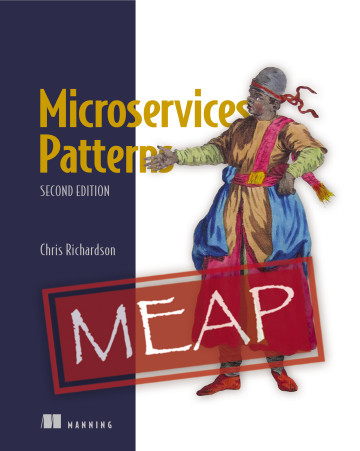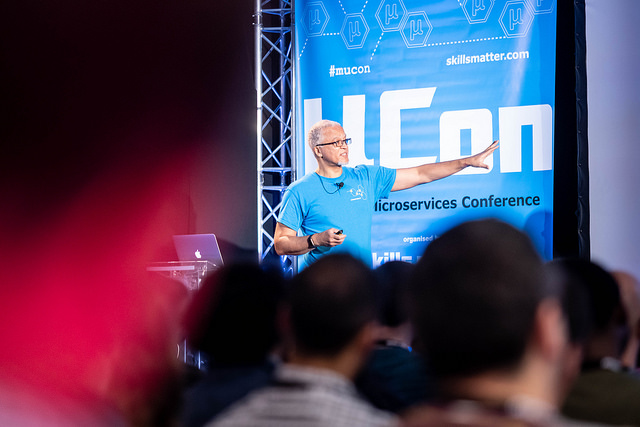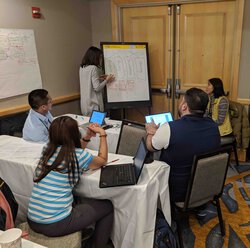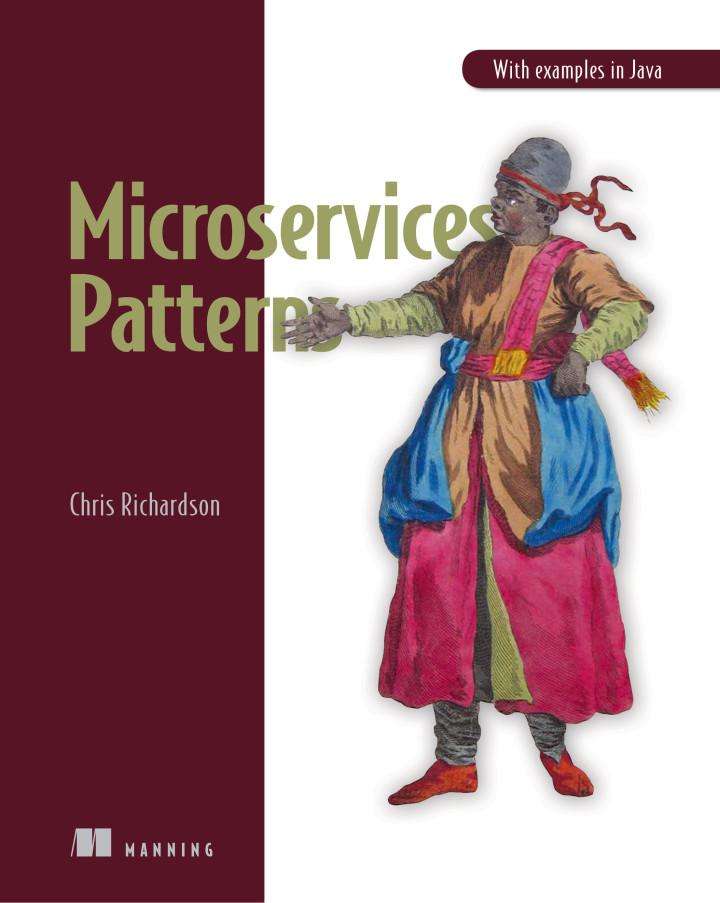Microservice Architecture
Supported by KongNew conference talks on asynchronous microservices: implementing Sagas and CQRS (#GotoChgo, #microcph)
I recently gave talks at a couple of conferences.
GOTO Chicago - Not Just Events: Developing Asynchronous Microservices
The first talk was at GOTO Chicago. This talk described how to solve distributed data management problems in a microservice architecture using asynchronous messaging. I described how to implement transactions using the Saga pattern and implement queries using the CQRS pattern. Both patterns rely on asynchronous messaging between services.
MicroCPH - Managing data consistency in a microservice architecture using Sagas
My second talk was at MicroCPH in Copenhagen, Denmark. It focussed on implementing transactions that span services using the Saga pattern
Slides
Video
sagas transaction management
About Microservices.io
Microservices.io is brought to you by Chris Richardson. Experienced software architect, author of POJOs in Action, the creator of the original CloudFoundry.com, and the author of Microservices patterns.
Microservices Patterns, 2nd edition

I am very excited to announce that the MEAP for the second edition of my book, Microservices Patterns is now available!
Learn moreASK CHRIS
Got a question about microservices?
Fill in this form. If I can, I'll write a blog post that answers your question.
NEED HELP?

I help organizations improve agility and competitiveness through better software architecture.
Learn more about my consulting engagements, and training workshops.
LEARN about microservices
Chris offers numerous other resources for learning the microservice architecture.
Example microservices applications
Want to see an example? Check out Chris Richardson's example applications. See code
Virtual bootcamp: Distributed data patterns in a microservice architecture

My virtual bootcamp, distributed data patterns in a microservice architecture, is now open for enrollment!
It covers the key distributed data management patterns including Saga, API Composition, and CQRS.
It consists of video lectures, code labs, and a weekly ask-me-anything video conference repeated in multiple timezones.
The regular price is $395/person but use coupon OGDQZDTI to sign up for $95 (valid until July 25th, 2025). There are deeper discounts for buying multiple seats.
Learn how to create a service template and microservice chassis
Take a look at my Manning LiveProject that teaches you how to develop a service template and microservice chassis.

BUILD microservices
Consulting services
Engage Chris to create a microservices adoption roadmap and help you define your microservice architecture,
The Eventuate platform
Use the Eventuate.io platform to tackle distributed data management challenges in your microservices architecture.

Eventuate is Chris's latest startup. It makes it easy to use the Saga pattern to manage transactions and the CQRS pattern to implement queries.
Join the microservices google group
Topics
Note: tagging is work-in-process
Cynefin · DDD · GitOps · Microservices adoption · ancient lore · anti-patterns · api gateway · application api · application architecture · architecting · architecture · architecture documentation · assemblage · automation · beer · books · build vs buy · containers · culture · dark energy and dark matter · decision making · deliberative design · deployment · deployment pipeline · design-time coupling · developer experience · development · devops · docker · eventuate platform · fast flow · generative AI · glossary · health · hexagonal architecture · implementing commands · implementing queries · inter-service communication · kubernetes · loose coupling · manning publications · microservice architecture · microservice chassis · microservices adoption · microservices platforms · microservices rules · microservicesio updates · modular monolith · multi-architecture docker images · observability · pattern · pattern language · patterns · refactoring · refactoring to microservices · resilience · runtime coupling · sagas · scripting · security · service api · service architecture · service blueprint · service collaboration · service design · service discovery · service granularity · service template · software delivery metrics · success triangle · survey · tacos · team topologies · technical debt · testing · transaction management · transactional messaging · wardley mapping
The patterns
Application architecture patterns
Decomposition
- Decompose by business capability
- Decompose by subdomain
- Self-contained Servicenew
- Service per teamnew
Refactoring to microservicesnew
Data management
- Database per Service
- Shared database
- Saga
- Command-side replica
- API Composition
- CQRS
- Domain event
- Event sourcing
Transactional messaging
Testing
Deployment patterns
- Multiple service instances per host
- Service instance per host
- Service instance per VM
- Service instance per Container
- Serverless deployment
- Service deployment platform
Cross cutting concerns
Communication style
External API
Service discovery
- Client-side discovery
- Server-side discovery
- Service registry
- Self registration
- 3rd party registration
Reliability
Security
Observability
- Log aggregation
- Application metrics
- Audit logging
- Distributed tracing
- Exception tracking
- Health check API
- Log deployments and changes
UI patterns
 Premium content now available for paid subscribers at
Premium content now available for paid subscribers at 

